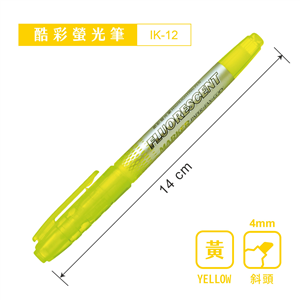 收藏
收藏

 二手徵求有驚喜
二手徵求有驚喜
定價:NT$ 1560
優惠價: 93 折, NT$ 1451
運送方式:超商取貨、宅配取貨
銷售地區:全球
即時庫存=1




How did lay people in old China save their lives when dealing with acute or chronic health issues? Conventional medicine was costly and might not have been an option for many. Instead, people in villages and towns relied on remedies drawn from a woodblock-printed illustrated booklet called the Seventy-Two Therapies, first published in 1847.
The goal of this book is to foster an appreciation of China’s long tradition of folk remedies. Each folk remedy is illustrated by a page from the circa 1860s woodblock edition of the Seventy-Two Therapies which the author used for translation. He also added a historical and interpretive analysis to expand on each therapy and to place it in the context of contemporary thinking, aiming at academics and readers interested in the everyday lives of common people in pre-1950 China, and in the folk medicine wisdom inherited from the past.
-------------------------------------------------------------------------------
“The 72 specific diseases identified intimate a vast, unexplored world. Professor Suleski’s translation and commentary calls our attention to a work that now compels us to expand our horizons.”
—Shigehisa Kuriyama
(Department of East Asian Languages and Civilizations, Harvard University)
“This book captures the fascinating depth and ingenuity in Chinese folk medicine that should still resonate with many readers today. Professor Suleski shows us how empathy and rigor, neither condescending nor mystifying, can shed so much light on the resourceful remedies and arresting imageries employed by past healers to make sense of human suffering and dignity.”
—He Bian (Department of History, Princeton University)
“In this riveting book, Suleski presents us with a rare glimpse of the kaleidoscopic and curious world of folk remedies in traditional China that has been hitherto overlooked by historians of medicine. Written with enthusiasm and accessible to a general audience, 72 Ways of Saving Lives offers valuable insight into healing practice among ordinary people that is both unconventional in history and rlevant to us today.”
—Yan Liu (Department of History, University at Buffalo, SUNY)
作者簡介:
Ronald Suleski received his PhD in Chinese History from the University of Michigan. He is Professor of History and Director of the Rosenberg Institute for East Asian Studies, Suffolk University, Boston. Prior to that he was Assistant Director of the Fairbank Center for Chinese Studies at Harvard University (2003– 2009), he has taught at the University of Texas at Arlington and at Sophia University in Tokyo, served as Provost of the Tokyo Campus of Huron University, and been elected President of the Asiatic Society of Japan.
His publications include The Modernization of Manchuria: An Annotated Bibliography (1994); Civil Government in Warlord China: Tradition, Modernization and Manchuria (2002); Manshū no seishōnen zō (Images of Youth in Manchuria) (2008, in Japanese); and Daily Life for the Common People of China, 1850 to 1950: Understanding Chaoben Culture (2018).
退換貨說明:
會員均享有10天的商品猶豫期(含例假日)。若您欲辦理退換貨,請於取得該商品10日內寄回。
辦理退換貨時,請保持商品全新狀態與完整包裝(商品本身、贈品、贈票、附件、內外包裝、保證書、隨貨文件等)一併寄回。若退回商品無法回復原狀者,可能影響退換貨權利之行使或須負擔部分費用。
訂購本商品前請務必詳閱退換貨原則。 收藏
收藏

 二手徵求有驚喜
二手徵求有驚喜
優惠價: 93 折, NT$ 1451 NT$ 1560
運送方式:超商取貨、宅配取貨
銷售地區:全球
即時庫存=1
How did lay people in old China save their lives when dealing with acute or chronic health issues? Conventional medicine was costly and might not have been an option for many. Instead, people in villages and towns relied on remedies drawn from a woodblock-printed illustrated booklet called the Seventy-Two Therapies, first published in 1847.
The goal of this book is to foster an appreciation of China’s long tradition of folk remedies. Each folk remedy is illustrated by a page from the circa 1860s woodblock edition of the Seventy-Two Therapies which the author used for translation. He also added a historical and interpretive analysis to expand on each therapy and to place it in the context of contemporary thinking, aiming at academics and readers interested in the everyday lives of common people in pre-1950 China, and in the folk medicine wisdom inherited from the past.
-------------------------------------------------------------------------------
“The 72 specific diseases identified intimate a vast, unexplored world. Professor Suleski’s translation and commentary calls our attention to a work that now compels us to expand our horizons.”
—Shigehisa Kuriyama
(Department of East Asian Languages and Civilizations, Harvard University)
“This book captures the fascinating depth and ingenuity in Chinese folk medicine that should still resonate with many readers today. Professor Suleski shows us how empathy and rigor, neither condescending nor mystifying, can shed so much light on the resourceful remedies and arresting imageries employed by past healers to make sense of human suffering and dignity.”
—He Bian (Department of History, Princeton University)
“In this riveting book, Suleski presents us with a rare glimpse of the kaleidoscopic and curious world of folk remedies in traditional China that has been hitherto overlooked by historians of medicine. Written with enthusiasm and accessible to a general audience, 72 Ways of Saving Lives offers valuable insight into healing practice among ordinary people that is both unconventional in history and rlevant to us today.”
—Yan Liu (Department of History, University at Buffalo, SUNY)
作者簡介:
Ronald Suleski received his PhD in Chinese History from the University of Michigan. He is Professor of History and Director of the Rosenberg Institute for East Asian Studies, Suffolk University, Boston. Prior to that he was Assistant Director of the Fairbank Center for Chinese Studies at Harvard University (2003– 2009), he has taught at the University of Texas at Arlington and at Sophia University in Tokyo, served as Provost of the Tokyo Campus of Huron University, and been elected President of the Asiatic Society of Japan.
His publications include The Modernization of Manchuria: An Annotated Bibliography (1994); Civil Government in Warlord China: Tradition, Modernization and Manchuria (2002); Manshū no seishōnen zō (Images of Youth in Manchuria) (2008, in Japanese); and Daily Life for the Common People of China, 1850 to 1950: Understanding Chaoben Culture (2018).
退換貨說明:
會員均享有10天的商品猶豫期(含例假日)。若您欲辦理退換貨,請於取得該商品10日內寄回。
辦理退換貨時,請保持商品全新狀態與完整包裝(商品本身、贈品、贈票、附件、內外包裝、保證書、隨貨文件等)一併寄回。若退回商品無法回復原狀者,可能影響退換貨權利之行使或須負擔部分費用。
訂購本商品前請務必詳閱退換貨原則。
※ 二手徵求後,有綁定line通知的讀者,
該二手書結帳減5元。(減5元可累加)
請在手機上開啟Line應用程式,點選搜尋欄位旁的掃描圖示
即可掃描此ORcode
|
||||||||||||||||||
|
||||||||||||||||||
|
||||||||||||||||||













